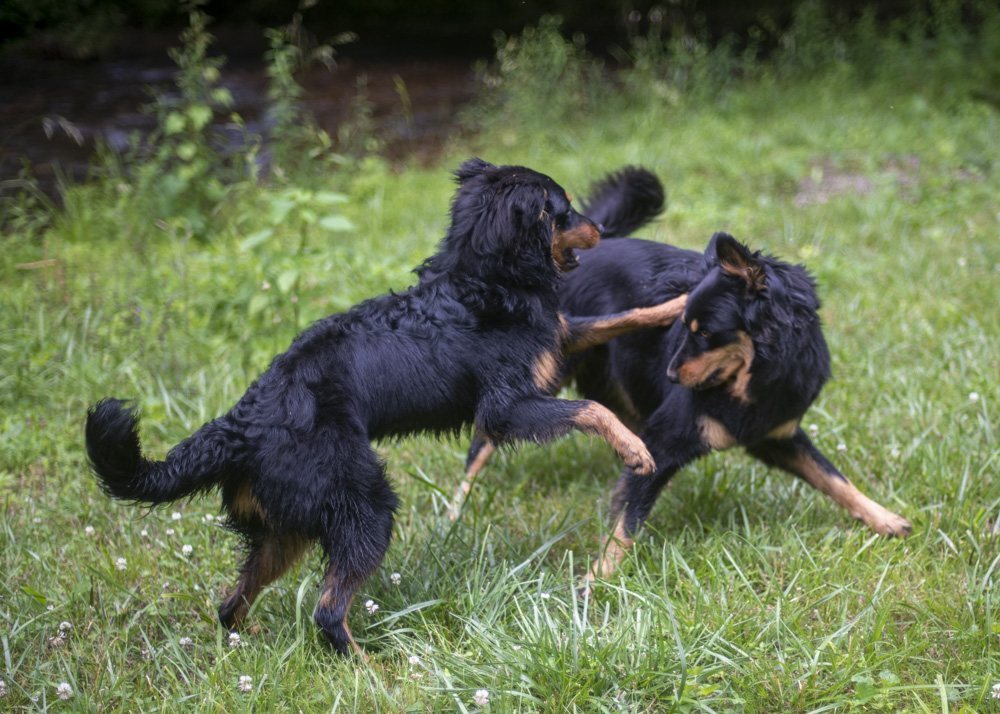Abstract
This article explores the historical role of drover’s dogs in the transportation of livestock across the United States in the 19th century. These specially trained dogs played a critical role in the success of moving large herds of animals along the paths of inland commerce. The article also discusses the decline of farm dogs in the 20th century, as farmers turned to machinery to replace the labor that was no longer available.
Nineteenth Century
During the 19th century, farmers in states west of the Appalachians, such as Kentucky, Tennessee, and Ohio, relied on drover’s dogs to help them transport their livestock to markets in the east. These dogs were highly valued for their ability to manage and move large herds of animals, including cattle, sheep, and pigs, along the paths of inland commerce. (Heinlen, 2021)
The Great Wagon Road, which ran from Philadelphia to Augusta, Georgia, was a crucial route for drovers moving livestock to eastern markets. The Cumberland Road, also known as the National Road, was another important pathway for transporting animals, connecting the Ohio River Valley to the east coast. These roads were often treacherous, and drovers faced numerous challenges along the way, such as bad weather, rough terrain, and the risk of livestock getting lost or stolen. (Hulbert, 1927)
Drover’s dogs played a vital role in helping drovers navigate these challenges. The skills and knowledge required to train and work with drover’s dogs were passed down from generation to generation. The dogs were trained to herd and protect the livestock, keeping them together and preventing them from wandering off or getting stolen. With their specialized dogs, drovers were able to move the animals at a steady pace, ensuring that they arrived at the markets healthy and in good condition.
The rate of travel for a drove of cattle on a 19th century wagon road varied, but it was generally around 10 to 15 miles per day. The speed of the cattle depended on a variety of factors, such as weather conditions, terrain, and the size and health of the herd. Overnighting a drove of cattle was a challenging task. Drover’s dogs played a crucial role in keeping the herd under control and preventing them from wandering off. The drovers had to make sure that the cattle had enough water and food to keep them healthy and in good condition. They also had to protect the herd from predators such as wolves and bears, which were common in the area. The drovers would set up a makeshift camp at night, using a combination of tents and wagons to provide shelter for themselves and the cattle. They would keep watch throughout the night to ensure the safety of the herd and prepare to continue the journey at dawn.
The need to drive livestock to market had a significant impact on the selection, use, and development of farm dogs in the region. Necessity led to the breeding of dogs with specific traits and skills, the development of specialized breeds, the training of dogs to work together in teams, and the creation of a rich and diverse culture of dog training and handling. The dogs used for droving were typically large and strong, with keen instincts and an ability to work independently. A drover’s team was often a mix of breeds, including Scottish Collies, English Shepherds, and various types of hounds. These dogs were highly valued by drovers, and were often treated as members of the family.
Twentieth Century
During and after World War II, there was a significant shortage of farm labor in the United States, as many workers were recruited for military service or found employment in other industries. This shortage of labor had an impact on the use of farm dogs, as farmers increasingly turned to machinery to replace the labor that was no longer available.
As a result, the use of farm dogs in the United States declined even further during and after World War II, as farmers found it more economical to invest in tractors and other machinery instead of training and maintaining dogs. Additionally, the development of new transportation technologies, such as trucks, made it easier to transport livestock without the need for drover dogs.
However, despite the decline in the use of farm dogs, some farmers continued to rely on them for specific tasks, such as herding sheep or guarding livestock against predators. In some cases, farmers who had a long tradition of working with dogs continued to train and work with them, passing on their knowledge and skills to future generations.
Conclusion
In conclusion, drover’s dogs played a critical role in the transportation of livestock across long distances in the 19th century. The need for these dogs led to the development of specialized breeds and a rich culture of dog training and handling. However, the shortage of farm labor during and after World War II led to a decline in the use of farm dogs as farmers turned to machinery and new transportation technologies. Despite this decline, some farmers continued to rely on dogs for specific tasks, keeping the tradition of working with dogs alive and passing on their knowledge and skills to future generations. ∎
References
- Henlein, P.C. 2021. Cattle Kingdom in the Ohio Valley 1783–1860. University Press of Kentucky. http://esbt.us/bn.
- Hulbert, A.B. 1927. The Paths of Inland Commerce. Chronicles of America Series: Benjamin Franklin Edition. http://esbt.us/bm.

